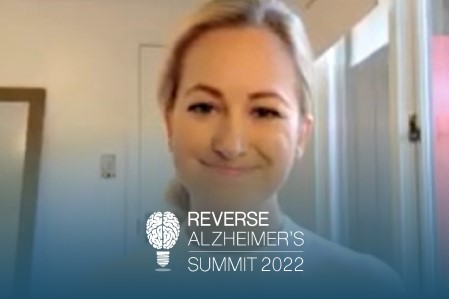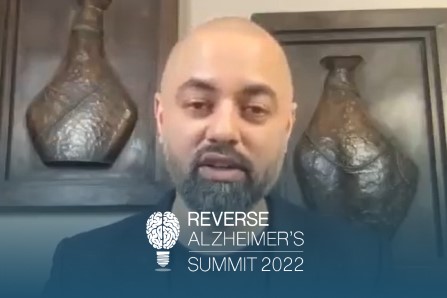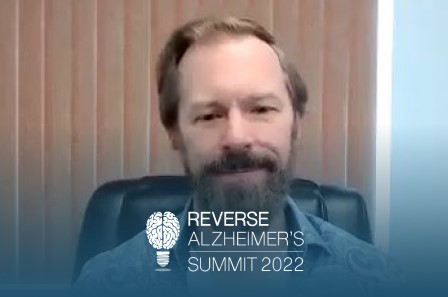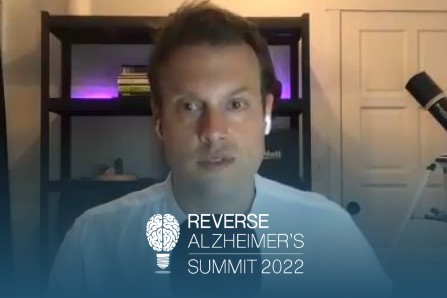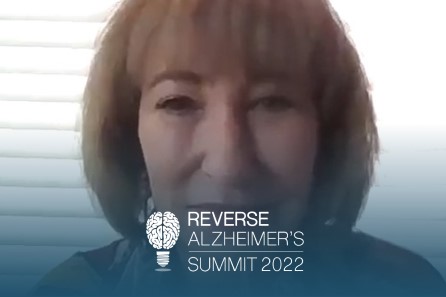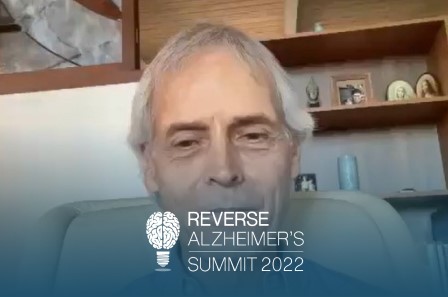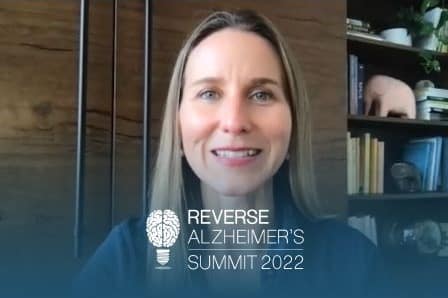Join the discussion below

Dr. Bredesen earned his MD from Duke University Medical Center and served as Chief Resident in Neurology at the University of California, San Francisco (UCSF) before joining Nobel laureate Stanley Prusiner’s laboratory at UCSF as an NIH Postdoctoral Fellow. He held faculty positions at UCSF, UCLA and the University of... Read More
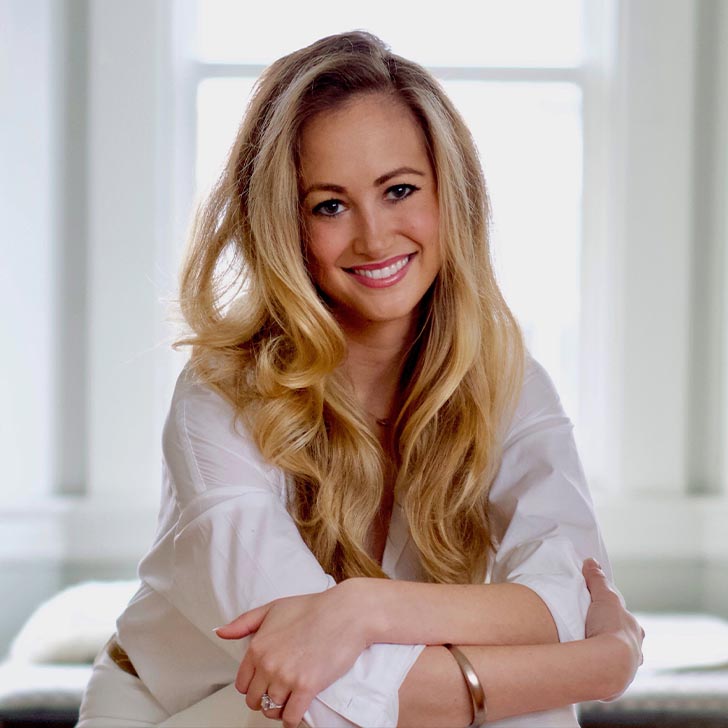
Tess is the Director of Cognitive Nutrition at Thrive where she gives talks to companies and their employees about the role nutrition plays in mental health. She's also the founder of Sia Health, a practice which specializes in the implementation of the nutritional strategies of the Bredesen Protocol. She works... Read More
- KetoFlex 12/3 specifics
- Tools/resources to help implement
- Personal/client anecdotes and workarounds
Dale Bredesen, M.D.
Welcome to the Reverse Alzheimer’s summit and I’m Dale Bredesen. And I have the wonderful honor today of interviewing our daughter Tess Bredesen, who is a brain health coach. Tess welcome to the Reverse Alzheimer’s summit.
Tess Bredesen
Thank you dad or should I say, thank you, Dr Bredesen. It’s wonderful to be here. I’m really excited for this conversation.
Dale Bredesen, M.D.
Yeah, dad’s good. So I think your, your journey has been an interesting one and your, how you kind of looked at the brain and brain health. And as I’ve said to many people, you are fortunate enough to be in the first generation that will not have to worry about Alzheimer’s disease. In my generation, this was one of the biggest concerns of people as we age, are we going to have our mental faculties fall apart? Are we gonna develop dementia? And for your generation, fortunately, there’s now so much to be done that you have a, you know, much better situation. You can worry about other things without really worrying about that. So if you could start by just talking a little bit about how did you get interested in brain health and how did you get interested in cognitive decline and what could be done to prevent and reverse cognitive decline?
Tess Bredesen
Yeah, great question. And coming from the Bredesen household, it seems to be in the genetics, but really it comes back, it goes back to what you know as our diet, when I was younger, when were in San Diego, or even before that in, at UCLA, when I would say our typical Friday night was one of perhaps pizza or Annie’s macaroni and cheese, sometimes ice cream, sometimes Betty Crocker brownies. And while I remember those Friday nights fondly, I think ultimately we did realize the link between what we were eating and how we were thinking, how, you know, how we felt waking up on Saturday morning. I think the link was made very clear to us when mom was diagnosed with breast cancer and understanding, you know, her history and the amount of stress that she underwent as a resident, right. When she was in medical… When you guys went through medical school and then later on having, you know, so many of those kinds of Häagen-Dazs and I mean, so much sugar, so many pro-inflammatory sources that ultimately, you know, looking, starting to look under the hood, we did start drawing this connection. You know, nutrition is about so much more than the number on the scale, right. And typically when we’re thinking of nutrition, that is the link that most people make. What we eat, right, is directly linked to kind of calories, calories in equals calories out, the number, what it reads on the number of scale. And yet there’s so much more to nutrition than just that one metric. It’s not that it’s not an important metric, right. But it’s one of so many. And so to be able to kind of see that link starting kind of understanding what our family history looks like, what mom’s diagnosis meant to our family. And then with I think the first book that I read on the subject was the China study.
Dale Bredesen, M.D.
Yeah.
Tess Bredesen
Understanding casing and the effect that casing has on tumor growth or suppression. And so that was kind of, I think the, the origin and from there, from that seed planted going from there and, you know, to Berkeley and studying nutrition, kind of thinking this is gonna be a hobby of my nutrition and simultaneously your protocol in the lab and understanding what nutrition meant to the Bredesen protocol ultimately was this, I mean, truly a serendipitous event in my life that, that allowed for me to turn this hobby into a career that then, you know, or a practice that I could then implement your science in a more practical, more pragmatic way for, for people to understand how the science relates to, you know, what it means to be at the grocery store, what it means to wake up in the morning and apply the routine, right. So that, I think that’s, that’s where it goes back to.
Dale Bredesen, M.D.
Yeah. And of course, you’ve spent the last several years as a brain health coach and maybe talk a little bit about a client, an example of that you’ve seen. Cause I know you’ve had some wonderful results with some of the clients you’ve had, coming in who already have cognitive decline, or of course in some cases are interested in preventing cognitive decline and you’ve been very successful with getting them to change their backgrounds, change their lifestyles, change, look for the right things, get the right evaluation and, and get going in the right direction. So maybe talk about an example of someone that you’ve worked with.
Tess Bredesen
Yeah. Well first I have to start by, you know, giving credit where credit is due and you are the one who really taught me how to interpret these ReCODE reports, right. And to really understand how they relate to the ultimate personalized or customized protocol that we develop together. And then I help implement with the client. So thank you for the hundreds of hours that you’ve put into my personal education, I would not be able to do. And my clients would not have reached the, the level of success that they, that they are able to reach without that behind the scenes help. So thank you dad for helping me and my clients, right, because my clients, I think, that’s where the, the magic happens is in these, in the weed moments where, when we’re meeting once a week for an hour a week, ultimately it’s about sustainability, right? So I talk about, you know, what I say for example, if I were to recommend eating a kale salad for every meal for the rest of their lives, you know, maybe they do it for a week and, you know, by the end of the week, they’re kind of miserable.
They’re kind of sick of kale, but is that sustainable? Right? So it has to be kind of this sweet spot where it’s going to address their, the criteria that we want to meet, but we also want to make sure that it’s enjoyable, right? Nutrition and lifestyle should be enjoyed too. So finding that sweet spot in that, kind of in that Venn diagram of what is addressing their contributing factors in a way that is sustainable is really important. So I actually have one client who is also a coach and she’s doing really, really well. She had a number of different contributing factors, but one of the things she always reminds me of is that information is not transformation. So we always kind of go back to this understanding of, okay, just because we have the knowledge, how does that translate to the incorporation, right? To your routine, your nine to five, right? Where does this fit in, especially if you’re working, right. If you have, if you have an actual nine to five, getting a lot of these various components of the protocol into your schedule can be tough. So, you know, finding the time, putting it in your calendar, making it a priority and where it can fit is oftentimes that missing link from information to transformation.
Dale Bredesen, M.D.
Yeah. It’s a really good point. And, you know, it’s amazing to me, how much things have changed in a decade, you know back in 2011, we applied for the first comprehensive trial. We go, let’s try to do multiple things and understand what’s causing each person’s decline. And of course at the time this was considered a 100% terminal illness for someone actually to get cognitive decline associated with Alzheimer’s and pre-Alzheimer’s so, you know, we were just hoping, you know, is there anything we can do that will change that, you know, change that equation. So we’re going in the right direction. And I’m sure there are more things that we’re missing. You know, we’re gonna keep, have to keep evolving and keep evolving, and keep tweaking it to make it better and better. But as you pointed out, getting people to do the right things, getting the compliance is a huge issue. And you can’t just tell people here’s a list of 50 things. Do them all.
Tess Bredesen
Exactly, exactly.
Dale Bredesen, M.D.
It’s just, it’s not gonna happen.
Tess Bredesen
It’s all of them.
Dale Bredesen, M.D.
And as they say, you know, if you just give someone a pill that only, about 70% of people will take the pill, the other 30% won’t even take the pill.
Tess Bredesen
I wish we were ourselves, it would be so much easier and yet still…
Dale Bredesen, M.D.
But still. So it is hard to get people to do the right thing. And yet, you know, we know that if they don’t do the right thing, that they’re gonna continue to decline. So I think you’ve done a really fantastic job with a lot of the work arounds. And I, you know, getting people to realize, Hey, this is not the end of your life because you’re not gonna be having chocolate milkshakes right now, or you’re not gonna be having, you know, lots of brownies. That it was actually embarrassing hearing about all the stuff we used to eat on Friday and it’s true.
Tess Bredesen
Our Friday nights were just like a…
Dale Bredesen, M.D.
Absolutely all that stuff.
Tess Bredesen
Oh my gosh. A sugar flood.
Dale Bredesen, M.D.
It’s horrible to hear it now, but in any case, so one of the things you’ve done really well is the workarounds. And you even, when you first started at Sia Health, you were looking at things that could be helpful for people, and yet could be delicious and fun and enjoyable. Could you maybe mention a couple of things? What are some of your favorites that have been fantastic workarounds for people so that they could keep on a plant rich, ketogenic diet could do the right things, could continue to have their metabolic flexibility and could continue to have their insulin sensitivity, everything that they need, ketosis, et cetera, for brain health, and yet could have things that were really delicious.
Tess Bredesen
Yeah. I think like you’re hitting on this critical component here, which is the enjoyment factor, right? The connection and the joy of food. I think there is so much to be said of the joy of food.
Dale Bredesen, M.D.
Yeah.
Tess Bredesen
And when we, a lot of times when we are talking about nutrition, we tend to forget or it’s, it is lost in the conversation around macronutrients or good fats, ketosis going back to the amount of joy that can, that joy, that food represents or can present to us. So I like to, so in the beginning of, you know, if a client is going through a program with Sia, then we spend that first session talking about a number of different things. One of them is, my clients, foods that they enjoy, right? The types of cuisines they love, the types of, you know, do they like sweet, salty, neither, both, right. What are the, what are their favorite types of meals? What are the foods that they ate when they were young? I think this is, it’s not a biomarker, right? This is not their high sesitivity CRP, but I think it’s a critical metric, right. Something that can’t be ignored because then we’ll continue to go back to what they love and build the work arounds, around it right. So it’s not, you have to give up the things that you love in order to make this protocol work for you. It’s how does a protocol revolve around or how can you translate it into something that you love? So for example, you know, well we actually tried, now that Betty Crocker is no longer a part of our Friday nights, you know, I love chocolate brownies. So I made a, you know, I translated a Betty Crocker recipe into a more compliant recipe with, you know, different, you know, cacao, raw cacao and some nut butters and even a little bit of psyllium husk. I actually like using psyllium husk in baked goods because it actually helps me at least eat a little bit less of that baked good. Because it’s gonna fill you up a little bit more quickly.
Dale Bredesen, M.D.
Yeah.
Tess Bredesen
Or for example, if someone really likes, you know, toast in the morning, right. That’s a common one that I see that, you know, people like starting their morning out with a piece of toast, right. That’s pretty common. So, you know, breads like either you can make your own bread, you know, kind of like a paleo nut and seed bread, or if you don’t wanna, you know, be in the kitchen, then there’s, you know, Julian Bakery, paleo bread or uprising foods, they have, what’s called the cube. That is a ketogenic friendly nut and seed bread. So, you know, other examples are, you know, if you like tacos, there’s the Yeti brand and there’s almond flour, or cassava flour, you know, tacos as opposed to flour or corn tacos. So there’s a number of, kind of, you could call them swaps, right. Brands or recipes that it doesn’t mean that you have to be giving up the foods that you love. It means exploring and understanding what is out there that meets the criteria that we are after. And a lot of times the criteria that we’re after is oftentimes lowering the blood sugar or getting into higher levels of ketones. So depending on my clients and what their goals are, we’re gonna find the foods that work for them, that they are able to then translate into a really enjoyable meal.
Dale Bredesen, M.D.
Yeah. And so what do you say to your clients who say, well, you know, I really do like to have that pizza every now and then.
Tess Bredesen
Yeah.
Dale Bredesen, M.D.
And I you’ve had workarounds for pizza. What do you typically suggest to them?
Tess Bredesen
That’s a really great question. And I could actually put it back to you too, because I know we have a couple of good swaps for pizza, which is, which was one of our favorite foods in the household a long time ago, but I would say, so it very much depends, right. If we’re going for something that like, you know, we want pizza multiple times a week and that’s something that was usually on the menu multiple times a week. Okay then maybe there’s a little bit less flexibility, right? Maybe we want to find a really good cauliflower crust or a recipe for a cauliflower crust with, you know, depending on your sensitivity to dairy, perhaps it’s, you know, a different, a non-dairy cheese like kite hill for example, is one good almond based cheese. And then, you know, pizza’s actually a great vehicle for a lot of these different veggies.
Dale Bredesen, M.D.
Yeah.
Tess Bredesen
So pizza, you know, not all pizza’s created equal, you can make a really good, you know, cauliflower or flaxseed pizza crust, and kind of build on top of it to make something that is fiber rich and has plenty of good omega threes, as opposed to this pizza that kind of leaves you feeling sluggish and increases your inflammation and glucose. So that’s, I would say more of the, if we wanna have it all the time, and then sometimes, you know, life happens and life can be a little bit messy and maybe you go out and, and there’s a party. Maybe there’s a super bowl Sunday that you, you know, that the only thing that they have there is pizza, and you forgot to bring your, you know, more compliant pizza, or you forgot some nuts and seeds to put in your, you know, your pocket or your purse or something like that. And if it happens like, you know, part of this is we have to remember that when we are feeling stress and guilt, it affects our digestive systems. And therefore can actually, you know, disrupt our microbiome even more so than if we were just a little bit less stressed and eating that same pizza. So the first thing to do, I would say is if it does happen, relax, enjoy it, right. And then there are some kind of workarounds for post pizza, if you will, like for example, a short walk. So if you do have that pizza pizza every once in a while, right. Make sure first that you’re having fiber with it.
So just like you mentioned in the end of Alzheimer’s, end of Alzheimer’s the befooda triangle, right. That saturated fat with a simple carbohydrates in the absence of fiber is what leads to more hyper inflammation. So making sure you have, you know, if there’s a side salad, maybe some roast broccoli on your plate, or even, you know, there are some psyllium husk that comes in capsule. So, you know, sneaking some psyllium husk capsules in your bag. If, you know, if you’re prepared that the, the pizza is coming for you. So having some fiber on board and then after the pizza, you know, doing some light activity. So that could be, you know, helping with the chores, maybe cleaning up the kitchen a little bit, or even convincing your family to take a, a short walk around the neighborhood. And then of course, what we like to do is having something like a mint tea, which helps with lowering glucose or even some cinnamon, which helps lower the glucose. So there’s a couple of things, you know, little yeah you can call them workarounds. So knowing that life happens, knowing that life is messy and, and then you continue on. So I will post the question back to you. What are your favorite workarounds?
Dale Bredesen, M.D.
Yeah, I mean, you know, I always go back to the biochemistry. What is the goal here for us to achieve synaptoblastic activity and it’s to, you know, reduce the inflammation and it’s to enhance the support and reduce the insulin resistance and reduce the glycol toxicity and reduce the toxicity. And so the, you know, the workarounds I tend to like are things that are very low glycemic and, you know, you mentioned the, the cauliflower pizza, which, you know, isn’t perfect, but it is a step ahead of classical pizza.
Tess Bredesen
Exactly.
Dale Bredesen, M.D.
And then, you know, looking at how do we work around some of the, you know, the cheese issue, because dairy can be inflammatory, you know, as you pointed out. So that that’s another issue, but at that, and then actually some of the, some of the kind of nut and dark chocolate, I think its fantastic if you’re gonna have some chocolate and, you know, I’ve always enjoyed chocolate. If you have chocolate with nuts, that certainly helps. And then of course, some things like oat milk, smoothies with oat milk, so much better than the old milkshakes with ice cream that we used to have a long time ago. So I really like the smoothies with oat milk approach. And then also to some extent, being careful, I used to think when I grew up, I thought about, yeah, just the more fruit you have, the better, but that can, you know, be an, certainly be an issue for its glycemic load. And of course it’s fructose, which is turning out to be a problem in and of its itself. As Dr. Robert Lustig has pointed out repeatedly, the issues that arise with fructose are beyond and of course, David Perlmutter has pointed out recently with his book uric acid, on uric acid called Drop Acid, which is another piece.
And Rick Johnson has done very, very interesting basic research on this and argues that in fact, a lot of what we see as Alzheimer’s disease is really the organismal response to high fructose over time, which is a very, I think a very interesting point and how much of is that’s going to account for all the Alzheimer’s we see remains to be seen, but I think it’s a really interesting issue. So again, I think, you know, increasing fiber, decreasing simple carbs, switching over to things like oat milk, as opposed to dairy, standard dairy, all of those things to me have been really good workarounds to help. And the I’d say the number one workaround for me personally has been that my favorite food has changed from pizza to salad and salad my gosh, you can put everything on it. You know, you can have some wonderful avocado on there and some wonderful beans on there and some wonderful carrots and just kind of go on and on. It’s infinitely variable.
So you can switch each day. And it’s, and of course, when I was in medical school, the way to get people to come to meetings was to serve pizza or cookies or both. And so, you know, that kind of became part of life and at no question, you know, it hurt many of us with all the stress with all the staying up all night, and then with all the, with all the, the high carbohydrate intake, just horrible and for, you know, hypertension for so many and prediabetes or type II diabetes for so many and dementia for so many and, you know, cardiac disease and just on and on. Unfortunately the sadness and the disease that we are all reaping. This comes back though to the way I learned medicine. And I wanted to ask you about that for nutrition, because you came through a very classical nutrition program at Berkeley. Mary Ann Vessel, you know, one of the most fairness nutritionist ever, you know, was heading up that program years ago. And so it’s a very classic program.
On the other hand, you’ve now had a lot of exposure to the sort of nutrition that helps your clients the most. So I’m always interested in when is modern medicine going to be practiced by the classical trainees, and the people who trained all of us in medicine. On the medical side, we’ve been very, very slow to come up to 21st century. A lot of my colleagues and a lot of my teachers have been stuck in the 20th century, the prescription pad type of medicine, as a opposed to the more modern, what I think of as network medicine or precision medicine or functional medicine looking at root cause. And then addressing those things. When you think about it, organisms work in networks, they don’t work as a single thing. Oh yeah just write a prescription for that medicine and everything will be better. This is really much more of a business model than it is of an actual medical outcomes model. So when you were, when you were studying nutrition then, how did that compare to what you’ve learned since in terms of actually helping human beings in need of good nutrition?
Tess Bredesen
Yeah. I think it’s really interesting. You bring up a really good point, which is that medicine or your medical training really was void of so much of this, you know, nutrition, which is more, you know, a lot of the root cause of a lot of these diseases that you were learning about. And that tended to be more of a deterrent for you know, Tara for my sister and me, when we were growing up thinking, you know, hearing about your training and the lack of training around nutrition and using nutrition as this tool, or even, you know, your most basic nutrition guidance for a patient who you may only see for 20 or 30 minutes. So I think that was one of the reasons I wanted to go into nutrition in the first place was because, you know, being a Bredensen, you are inherently interested in health, you just can’t help it. And yet I think I saw nutrition as more of the, you know, functional route, so to speak at that age when I was going through that education, but still there was a bit, a tad bit of a letdown in terms of the textbooks, right? When we are looking at nutrition from the textbook, even a place that’s progressive as UC Berkeley, we’re still gonna get a lot of that same food pyramid or plate, right. That is coming from more government resources.
Dale Bredesen, M.D.
Yeah.
Tess Bredesen
And so did I learn all the things that, did I have a great foundation for building on top, for understanding the more functional medicine, you know, the tie in with glycol toxicity? Absolutely. But it is, you know, a degree, you know, a nutrition degree kind of enough to, to tailor and customize a client’s macronutrient and micronutrient profile for the Bredesen protocol. I think that took a little bit more of, you know being, you know, at the dinner table with all of us and talking about nutrition and talking about the contributing factors and ReCODE and KetoFlex 12/3 for the many, many, many hours and days and months that we do, I think it took a little bit more of this overlay. So I don’t think that we’re quite there yet, but at the same time, because nutrition is a relatively young field, right? It’s a relatively young science, if you really think about it, that we still have a ways to go. And I think translating it to to patients, to clients in a way that’s not, you know, just understanding the headlines, in a way that we can start creating more of an understanding of nutrition as opposed to, you know, coffee is great. It’s a super food. Just kidding. Coffee is horrible for you. It’s gonna lead to your, you know, decline. I mean, there’s so much confusion. So a lot of the times, I think it’s just getting the basics, having a client understand, you know, what their hemoglobin A1C may be, and how it relates to their longevity, little things like that, kind of as a foundation can really help, you know, once you understand your metrics, you know, basic metrics, then you’re gonna have a little bit more motivation to eat the right foods.
Dale Bredesen, M.D.
Yeah. And, you know, as a brain health coach, you deal with people who are interested in improving. And one of the issues and we’ve talked about in the past is the idea of wearables and people are using everything from aura rings to Apple watches. I mean, you now look at, you can measure so many things now, you can measure your heart rate variability, and you can measure your telomere length and you can do continuous glucose monitoring.
Tess Bredesen
Yeah.
Dale Bredesen, M.D.
And you can look at your microbiome on and on. And a lot of this you can do with wearables. So given all of that and given how important these physiological parameters are turning out to be for cognition and reversal of cognitive decline and prevention of cognitive decline, what do you recommend to your clients and what do you like to use yourself?
Tess Bredesen
Well, I already outed myself as a big, you know, I’m not a brand ambassador, but sometimes I feel like I am, because I do recommend the aura a lot. I find that I am motivated by numbers and it’s particularly those that are offered by aura. And the other thing I like about aura is that it’s not another screen that is giving you that blue light or beeping at you, that we are so surrounded by these days. So I’m a little bit impartial. However, I would say it very much depends on the learning style of a client. So if that person is not motivated by numbers, perhaps a wearable is not right for them. Oftentimes what these people will do is, is look at their, you know, biomarkers, maybe they’ll wear a wearable or, you know, a nocturnal oxygen saturation monitor, like the better for a few days to get some basic metrics and then take it off and not have to think about it or talk, you know, think, you know, incorporate its learnings every single day. On the other hand, there are some of clients who are motivated by numbers. And I think so it depends on the learning style, but if you are, and I happen to be one of those people who I am, I would say the aura, and then also, you know, it really doesn’t matter there’s so many good ones and so much good technology. It just depends what you all already have and which ones you like. But we can use that data and, you know, try to understand it. I think what’s interesting is that different strategies come out of the data for different people. So for example, some people find that they’re not deep, you know, they have zero or little deep sleep.
Dale Bredesen, M.D.
Yeah
Tess Bredesen
Maybe we choose, you know, some strategies or a set of tools in our toolbox for them, or perhaps you notice that your heart rate variability is very low. Okay maybe that comes with its own set of strategies. So I think there’s a lot of opportunity, a lot of insights that can be pulled from the data. But if you don’t like wearing these devices all the time, maybe you wanna do it once or a few times, every few weeks to check in on your progress.
Dale Bredesen, M.D.
Yeah. One of the things that’s been really interesting to me is just to change in medicine, the medicine that I was taught way back in the seventies and eighties was the medicine of symptoms that were often fairly severe symptoms. You know, I can’t sleep at all or you know, I can’t stay awake during the daytime or I’m getting demented and I can’t remember anything. Now, you know, we are discovering it’s a presymptomatic and minimally symptomatic medicine. We’re discovering just as you said, oh my gosh, guess what? I’m not getting much deep sleep at all. I’m so glad I found that out because now, before it hurts me 10 years down the road, and we know very well that you go from beginning of brain changes to Alzheimer’s diagnosis is about 20 years. You’ve got a long run up to this. So there’s so much you can do. If you just know what to do, and you just have that feedback, it’s a huge issue. And I know, you know, when I first started looking at some of the wearables, one of the things that surprised me was, oh, wait a minute the heart rate variability can be very low. You do some deep breathing and my gosh, it just skyrockets.
Tess Bredesen
Isn’t that interesting.
Dale Bredesen, M.D.
And so there’s just, I was surprised at that huge difference that you actually see in there. I was also surprised looking at ketones just checking ketones.
Tess Bredesen
Yeah.
Dale Bredesen, M.D.
Doing the wrong thing, you’re gonna see it. The ketones are gonna come up as zero. If you’re on the right track then actually you’re gonna see that the ketones clearly are coming up and you’re doing much, much better.
Tess Bredesen
Yeah.
Dale Bredesen, M.D.
So when you started looking through your, you know, your aura ring and things like this, what surprised you the most? Were there any of the readings that came out that, or from your clients or from you that really surprised you?
Tess Bredesen
Yeah. In terms of the metrics. So for aura, I would say one of the biggest surprises for aura or looking at sleep data or health data is how variable, just like you were saying, how variable heart rate variability is and how one of the things actually, when another reason why like aura is because they have this philosophy of more is not necessarily better, right? So for example, if you are stressed, if you didn’t get a good night’s sleep, or if you perhaps you know, ran a marathon yesterday, you did something very challenging at the gym yesterday, today, it’s going to tell you maybe, you know, your heart rate variability is a little bit lower, your readiness score. So to speak is a little bit lower, take it easy, right? Choose a more rejuvenating practice. So that day you’re gonna do something more like yoga or choose a meditation practice, a guided breath, breath work.
Dale Bredesen, M.D.
Yeah.
Tess Bredesen
I think understanding how your heart rate variability and your base heart rate and your sleep are all kind of factoring into this readiness score that is then kind of guiding you as to what you, how much challenge you are going to exert, you know, how much effort you’re gonna exert today and what you choose to do. I think that is one of, I would say the biggest takeaways. And then in terms of old metrics, hemoglobin and A1C, the number of, of people who are pre-diabetic and it is not flagged.
Dale Bredesen, M.D.
Yeah.
Tess Bredesen
For, I would say that has been, you know that, and mycotoxins are kind of the two categories that surprised me most going into, you know, creating Sia Health is just how many, just like you said, the kind of pre-symptomatic folk who are not, you know, coming at this, not for reversal, but for prevention and looking at their metrics and looking at their hemoglobin A1C and saying, yeah, this is something that we can easily take care of. It’s not easy, right. It takes work, but it’s something that’s very addressable and left unchecked for, you know, a few more years or decades could result in decline. And this is something that we can take care of, you know, over the next three months, it’s not toxicity. It’s not going to take a year or, you know, a very long time to address if we do all the right things. So that would probably be, you know, in terms of what I found in the sleep data, heart rate variability, and that’s the usage that just, how well you can use that data. And then just in terms of the overall population and clientele, you know, using and understanding this one, you know average this one metric and how pervasive it is, especially with our Western diets. That’s kind of the, one of the biggest takeaway from my practice.
Dale Bredesen, M.D.
Yeah. You know, you brought up mycotoxins and I think it’s so interesting that we were not taught about these in medical school as being an important thing. And yet it’s at this point, it’s undeniable from the work of Ritchie, Dr. Ritchie Shoemaker, Dr. Mary Ackerley, Mary Kay Ross, I mean, on and on, on Cat Taubes I mean, so many people who have been instrumental in understanding mycotoxin related illness. And I just received an email from a group in Australia. They’re trying to get the government of Australia to recognize, and the national health system in Australia to recognize that mold and mycotoxins are a cause of illness. And the formal view of the entire country of Australia is that mycotoxins have nothing to do with any human illness, which is, I mean, talk about sticking your head in the sand. It’s just amazing. And of course, I hope that they will be more enlightened over time, but it takes a while sometimes to change a big body that does not want to be changed. And really frankly, doesn’t have a lot of incentive to change while many, many people are being heard. And one of the things that we find both in the trial that we did and in many, many anecdotes before that, that if you don’t recognize those and treat those successfully, you don’t get best outcomes. And so I know you’ve got a number of your clients who have been on treatment for mycotoxins and what sorts of, what sorts of things have you done to help them with best outcomes? So what sorts of nutrition have you worked with them for, and what sorts of other sorts of interventions have you used with them to get best outcomes?
Tess Bredesen
Yeah, it’s a really great question because, you know, I did not go into this practice assuming or thinking that mold, or, you know, toxins associated with mold would be a topic of conversation every single day. And yet that is the case. So I, you know, I would estimate about 50% of my clients have, you know, the contributing factor or a contributing factor of a biotoxin usually it’s a mycotoxin.
Dale Bredesen, M.D.
Wow.
Tess Bredesen
And so, yeah, unfortunately, I’ve had to familiarize myself with it through the work of, you know, the astounding Dr. Dale Bredesen, but as well, you know, Dr. Neil Nathan, and Ritchie Shoemaker, I would say the resources. So there are some helpful resources that I like to incorporate. It’s not just, you know, we’re not just talking about nutritional interventions here. Although, of course that plays a role because, you know, with mycotoxins also comes inflammation and therefor food anti-inflammatory foods have to play a role, but in terms of the resources for mold and mycotoxins partly is let you know if there, if there is an issue, if it is stemming from inside your house, does the weather permit you to workout outside or get outside as much as humanly possible. Because part of it is our systems just need a break, right? When we are constantly detoxing and, and then retoxing, we need some sort of break throughout the day where we can ideally, you know, get some circulation, get some movement, get some fresh oxygen. So getting outside is absolutely critical, then some resources. So EC3 is a company by, I believe it’s Dr. Dennis Donald or Donald Dennis. I could be, I could be saying it incorrectly, but EC3 is a great resource. It’s a great company that has candles.
So it’s not going to, you know, completely remove, it’s not gonna remediate the mold, but in the interim, there are some EC3 candles and they offer a number of different products related to mycotoxins. But if the issue is being addressed in the interim, there are some candles that they offer to help to kill off those mycotoxins. So the FLIR ONE is an infrared kind of a thermo scan that shows you if a leak is present and therefore you can fix the leak before it resolve, it turns into an issue with mold and therefore mycotoxins. And then of course, the one that, that you and mom introduced me to, which is the, a RIQ. So getting a really good hepa filter and making sure that you’re doing everything for prevention as well. So, you know, there’s a number of resources and granted, this is a really tricky one. This is a one that, that takes a lot more intervention and sometimes resources, right? And you have to kind of understand that there’s you know, there are, because this is a kind of new territory that there are pioneers in the industry like Michael Schranz. And then there of course are gonna be some people who are out to make a buck. And, you know, and the quote on remediation are kind of run the gamut. And so doing this thoughtfully with the right resources, with the right help is really critical if this is a contributing factor.
Dale Bredesen, M.D.
Yeah. That’s a good point. And it’s such an area of flux. People are still learning new things about it. What’s critical, there’s still ongoing controversy. And you mentioned Dr. Neil Nathan, who’s just been fantastic. And as an example, of course, Dr. Shoemaker would argue that we don’t need to actually have antifungal. We should just be dealing with the ongoing inflammation. And on the other hand, of course, Dr. Nathan would argue that no, we actually do have to deal with the fungi themselves, the molds themselves with antifungals. And so there’s, you know, even within the experts in the field, where you know, there’s no perfect answer yet.
Tess Bredesen
Yeah. Uh huh.
Dale Bredesen, M.D.
So let’s finish up here by, I wanted to ask you a little bit about your current work. You’ve been working with Arianna Huffington and her very interesting company Thrive. And she’s, obviously you guys are reaching a lot of people she talks often about microsteps in trying to improve behavior. And how have you found the work with her and how have you incorporated these sorts of things into your approach to get better cognition and better mental health for so many people that you’re working with out there.
Tess Bredesen
Yeah. And this has been really exciting, a really exciting project to be able to kind of, you know, have my practice Sia and then also be able to work with Arianna and with Thrive. I think there it’s more, the work is around, you know, getting aware, having people become more aware that there are things that you can do that can be done to prevent cognitive decline and even to reduce, you know, stress and burnout. So it’s, you know, addressing employees of companies and, you know, giving talks around nutrition as it relates to brain health and burnout. And so it’s a little bit of a, I would say a, a different demographic, right? We’re not talking specifically to people who are interested in the Bredensen protocol. They might be interested in, you know, staying sharp so that they can, you know, live a long life and have a successful long career and not burn out, right. Particularly amid this pandemic it’s been, you know, a huge concern that with the stress with the uncertainty has come an increase, not a decrease in the sales of Oreos and goldfish and alcohol.
Dale Bredesen, M.D.
Yeah.
Tess Bredesen
So understanding that there is, you know, this is a unique opportunity that we have right now with, you know, working from home, going back to the office and kind of changing up these routines in order to fit this, this lifestyle and this nourishment that is worthy of us, right. And I think the philosophy of microsteps, so it’s this idea that we’re incorporating small little changes that build on top of one another. So one principle here that I really like that I resonate with is habit stacking. So you’re taking your building one habit that you would like to do on top of one that you currently do. So on an existing one, as a way of, you know, slowly be, you know, setting up your routine and your patterns in a way that you choose as opposed to, you know, the way that it was, you know, already written or the way that kind of chose you. So I think there’s some great takeaways in this philosophy of microsteps. And then I feel, you know, it’s been really fun to be able to introduce the concept of nutrition as it relates to cognition or mental health, to a more general public who says what are you talking about? You know, there’s no way that what I eat is affecting my mood or my longevity, right? So it’s more of the introductory concepts, which has been really fun.
Dale Bredesen, M.D.
Yeah, very interesting. And I think, you know, we’re coming up against all this all the time that, you know, stress and insomnia and threat and depression and anxiety, these are all tied in to cognition and these all impact your cognition over time and therefore address those. In fact, you know, your brain’s response to this stress and threat is a part just as its stress and threat from chemical toxins and things like that. Also mental health stress and threat clearly impacts. And of course, there’s been a lot written recently about the fact that, you know, adverse childhood experiences, also a risk factor for future cognitive problems. So this is, you know, again, this is all about long term brain health and getting things going at appropriate times.
Tess Bredesen
Exactly. It’s all interrelated, which is something that you and mom taught me, taught us from a very early age.
Dale Bredesen, M.D.
Yeah. Well, this is fantastic. And so the work you’re doing is very exciting. And I wish you continued a fantastic success and continued evolution of the approaches that you’re taking. You know, I really think that, you know, your generation is gonna be the one that’s going to make it so that these complex chronic illnesses starting with Alzheimer’s disease are very rare. And just as you know, we don’t worry about, we don’t wake up in the morning now worrying about leprosy. We don’t wake up worrying about polio or smallpox, fairly soon we won’t wake up worrying about Alzheimer’s disease either. So I wish you continued great success. What message would you like to lead to everyone as we sign off here?
Tess Bredesen
Oh, man, last message, it is doable, right? Find your workaround. Remember the things that you love and find a way to incorporate them in a way so that the foods and the things that you do love you back. That’s the biggest challenge that we have, but this is a good opportunity to be able to incorporate a routine that is sustainable for you so that it’s not, you know, this impossible. You know, wake up every morning and I don’t look forward to my meals. No, it’s choose the foods and choose a routine that’s gonna love you back. That’s my message.
Dale Bredesen, M.D.
That’s great. Thank you. You know, I think the last time I grilled you was probably when you came back from a date late on Saturday night. So thank you for letting me grill you one more time. Thanks very much Tess.
Tess Bredesen
Always, thanks dad.
Dale Bredesen, M.D.
Okay bye, bye.
Tess Bredesen
Bye.
Downloads

